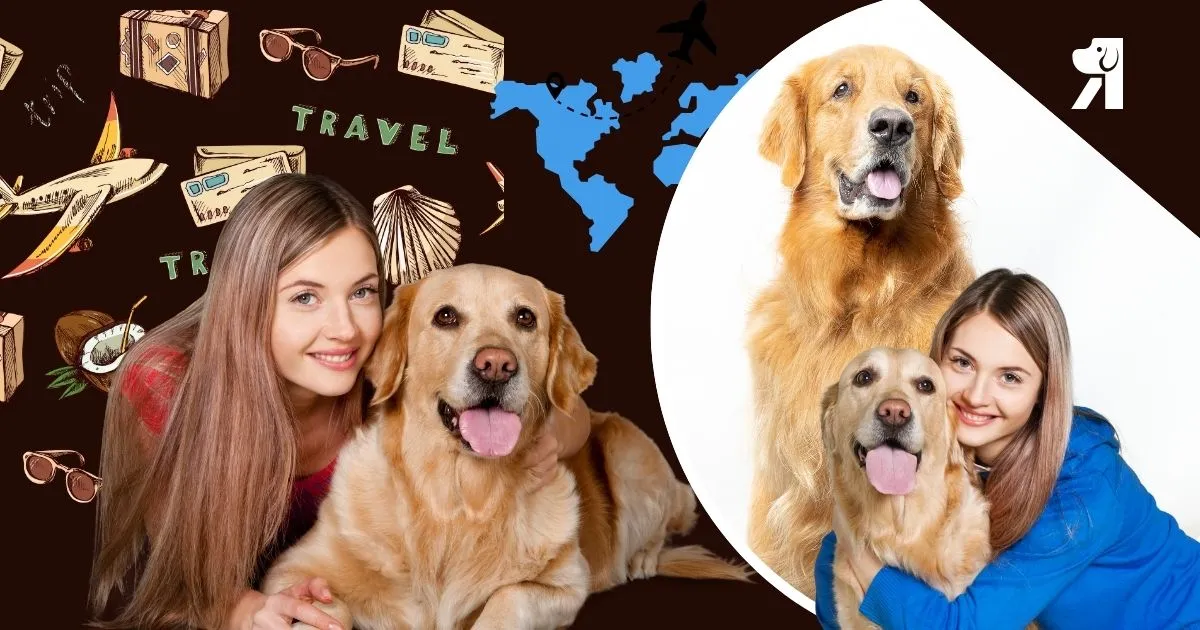
12 Safety Tips for Pet Owners to Ensure Joyful Travel

Traveling with pets can be one of life’s greatest joys. Whether it’s a weekend road trip, a long cross-country journey, or just running errands, having your furry friend by your side makes the experience more enjoyable. However, traveling with pets requires careful planning and awareness to ensure their safety and comfort. Pets, especially cats and dogs, are vulnerable in unfamiliar environments. Being proactive can prevent accidents, reduce stress, and help you and your pet enjoy the trip. Here are essential safety tips for pet owners on the road.
Top 12 Safety Tips for Pet Owners to Travel Confidently
1. Plan for a Safe Journey
Preparation is key to safe travel with pets. Before hitting the road, consider your pet’s needs and the nature of your journey. Make a checklist that includes pet supplies, travel documents, and emergency contacts. Ensure your pet is up-to-date on vaccinations and has identification, such as a collar with your contact information and a microchip. For longer trips, locate veterinary clinics along your route. Apps and online maps can help identify pet-friendly facilities in case of emergencies.
Research your destinations as well. Not every location is pet-friendly, and some hotels, parks, or attractions may have restrictions. Planning allows you to schedule breaks for your pet to stretch, relieve themselves, and drink water. If your pet is not used to long car rides, start with shorter trips to acclimate them. This can reduce anxiety and motion sickness, making the journey smoother.
2. Use Proper Restraints in Vehicles
Vehicle safety is critical when traveling with pets. Pets should never be left to roam freely in a moving car. Unrestrained pets can distract drivers and be at risk of injury during sudden stops or accidents. Use a pet seatbelt, car harness, or travel crate to secure your pet. Crates should be large enough for your pet to stand, turn around, and lie down comfortably. Please make sure the crate is well-ventilated and secured so it does not slide or tip over during travel.
For dogs that are not crate-trained, consider a barrier or partition to keep them safely in the back seat. Cats and smaller animals are best transported in carriers with soft bedding. Avoid placing carriers in the front seat, where airbags could harm your pet in a collision. Proper restraints protect both your pet and everyone in the vehicle.
3. Maintain a Comfortable Environment
Pets are sensitive to temperature and environmental changes. Always keep your car well-ventilated and avoid extreme temperatures. Never leave pets alone in a parked vehicle. On hot days, even a few minutes in a car can lead to heatstroke or death. Similarly, cold weather can be dangerous, especially for short-haired dogs, small breeds, or elderly pets.

Provide familiar items, such as a favorite blanket, toy, or bedding, to help your pet feel secure. Soft music or a calm environment can reduce stress for pets prone to anxiety. For long trips, plan regular breaks every two to three hours. Offer water and allow your pet to relieve themselves. Avoid feeding large meals immediately before travel to reduce the risk of motion sickness, particularly in dogs and cats prone to it.
4. Pack a Pet Travel Kit
A well-stocked pet travel kit can make your journey safer and more convenient. Include essentials such as food, water, bowls, leashes, waste bags, grooming supplies, and medications. Pack a small first aid kit specifically for pets with items like bandages, antiseptic wipes, tweezers, and a digital thermometer. Bring your pet’s medical records and a list of any allergies or medications.
For outdoor adventures, include items to protect your pet from the elements, such as sunscreen for pets with light fur, insect repellent safe for animals, or a portable shade canopy. A collapsible water bowl or a travel water bottle designed for pets is helpful for hydration during stops. Having everything organized and easily accessible ensures your pet’s needs are met even in unexpected situations.
5. Choose Pet-Friendly Accommodations
If your journey includes overnight stays, select pet-friendly accommodations. Many hotels and vacation rentals allow pets but have specific rules regarding size, number of animals, and fees. Confirm these details before booking to avoid surprises. Pet-friendly hotels often provide amenities such as pet beds, food bowls, and designated walking areas.
Consider alternative lodging options, such as campgrounds or vacation rentals with fenced yards. These environments provide pets with space to move freely and safely. Always check reviews from other pet owners to ensure the location is truly accommodating. Planning for lodging reduces stress for both pets and owners, providing a comfortable stay.
6. Keep Identification Updated
Identification is crucial in case your pet becomes lost during travel. Ensure collars are secure and display up-to-date contact information. A microchip provides permanent identification and increases the chance of being reunited with your pet. For trips abroad or to unfamiliar areas, carry copies of vaccination records and a recent photo of your pet.
Label your pet’s travel crate with your name, phone number, and destination address. Some owners also use GPS trackers attached to collars for added security. Being prepared with proper identification helps you respond quickly if your pet wanders off or an emergency occurs.
7. Observe Pet Health and Behavior
Travel can be stressful for pets, and behavioral changes may indicate discomfort or illness. Monitor your pet for signs of stress, motion sickness, or fatigue. Dogs may pant excessively, drool, or whine, while cats may hide, vocalize, or refuse food. If your pet appears unwell, take breaks, provide water, and consult a veterinarian if necessary.
Familiarize yourself with common travel-related health issues. Motion sickness, dehydration, heatstroke, and anxiety are the most common problems. Prevention is easier than treatment, so adjusting your travel routine to match your pet’s comfort and health is critical. In some cases, veterinarians may recommend mild sedatives or anti-nausea medications, especially for anxious pets during long trips.
8. Practice Safety at Stops and Outdoor Activities
Whether stopping at a rest area, park, or beach, keeping your pet secure is essential. Use a leash or harness at all times when outside a vehicle. Avoid areas with heavy traffic, wildlife, or unfamiliar animals. Some environments pose hidden dangers such as sharp rocks, toxic plants, or contaminated water.
For dogs that enjoy swimming, ensure the water is safe and that your pet wears a life jacket if necessary. Even friendly dogs can panic in water or currents. For cats or small pets, carry them securely when walking through crowded or unfamiliar areas. These precautions reduce risks and allow you to enjoy outdoor activities without worry.
9. Travel Regulations and International Considerations
If your trip involves crossing state lines or international borders, familiarize yourself with pet travel regulations. Some countries require vaccinations, health certificates, or quarantine periods. Airlines have specific rules for pet travel, including crate requirements, weight limits, and documentation requirements.
Booking flights in advance and understanding airline policies is essential. Choose direct flights whenever possible to minimize stress and handling. If traveling internationally, contact the consulate or embassy in the destination country for detailed pet import rules. Compliance with regulations ensures smooth travel and avoids unexpected delays or legal complications.
10. Train and Acclimate Your Pet
Training your pet for travel can make the journey safer and more enjoyable. Dogs can learn commands such as “sit,” “stay,” or “go to crate,” which are helpful during travel. Gradually acclimating pets to their travel crates, car rides, or new environments can reduce anxiety. Short trips followed by positive reinforcement, like treats and praise, help pets associate travel with pleasant experiences.
Cats may need time to adjust to carriers or car rides. Covering carriers with a light blanket can create a sense of security and reduce stress. For pets prone to nervousness, pheromone sprays or veterinarian-approved calming supplements can be considered. Training and acclimation improve safety and minimize accidents caused by panic or restlessness.
11. Emergency Preparedness
Despite careful planning, emergencies can happen. Having a plan for unexpected situations is crucial. Keep a list of emergency contacts, including veterinarians along your route, animal poison control centers, and pet-friendly shelters. Know the nearest veterinary clinics at each stop and have a backup plan in case your pet becomes ill or injured.
Carry your pet’s essential medical records and ensure your travel insurance covers pets if applicable. Even the most basic first aid knowledge can be lifesaving. Being prepared for emergencies reduces panic and allows for prompt, effective action when situations arise.
12. Consider Pet-Friendly Transportation Alternatives
While cars are the most common mode of travel for pets, other options exist. For train travel, some carriers allow small pets onboard, often in secure carriers. Ferries and boats may also have regulations for pets, including leash requirements, life jacket requirements, or restrictions on confined areas. Always check policies before booking.
When using rideshares or taxis, confirm that pets are allowed and that the vehicle can safely accommodate your pet. Proper planning ensures safety and prevents last-minute stress or denial-of-service attacks.
Ensuring Safe and Joyful Journeys with Your Pets
Traveling with pets is a rewarding experience, but it requires responsibility, preparation, and awareness. By planning, securing pets in vehicles, maintaining comfort, and monitoring health, you can ensure a safe journey. Pet-friendly accommodations, proper identification, and emergency preparedness further protect your furry companions.
Remember, each pet has unique needs and a distinct personality. Observing behavior, offering reassurance, and providing familiar items can make travel enjoyable for everyone. Safety is not just about preventing accidents; it is about ensuring your pet feels secure and happy throughout the journey. With careful planning and thoughtful practices, traveling with pets can become a seamless and joyful adventure.
Safe travels with your furry friends, and may every journey be memorable for both you and your pets.